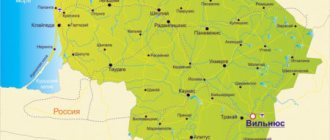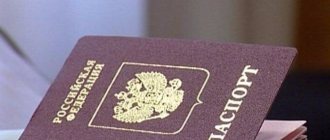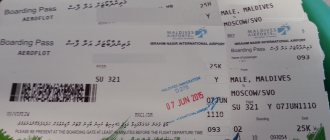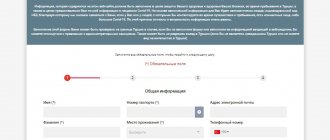Transfer of cash currency and monetary instruments
Rules for the movement by individuals of cash and (or) monetary instruments across the customs border of the Eurasian Economic Union
According to the Customs Code of the Eurasian Economic Union (hereinafter referred to as the EAEU Customs Code), cash includes banknotes in the form of banknotes and treasury notes, coins, with the exception of coins made of precious metals, that are in circulation and are legal tender in the member states or states ( group of states) that are not members of the Union, including those withdrawn or withdrawn from circulation, but subject to exchange for banknotes in circulation; Monetary instruments include traveler's checks, bills of exchange, checks (bank checks), as well as securities in documentary form, which certify the obligation of the issuer (debtor) to pay funds and which do not indicate the person to whom such payment is made.
In accordance with the EAEU Customs Code, cash and (or) traveler's checks are subject to customs declaration if the total amount of such cash and (or) traveler's checks upon their one-time import into the customs territory of the Union or one-time export from the customs territory of the Union exceeds an amount equivalent to 10 thousand US dollars at the exchange rate valid on the day of submission of the passenger customs declaration to the customs authority.
When calculating the total amount of cash being moved, both foreign currency and the currency of the Russian Federation are taken into account.
Cash instruments, with the exception of traveler's checks, are subject to customs declaration regardless of the amount being moved.
When customs declaring monetary instruments, with the exception of traveler's checks, the passenger customs declaration shall indicate the nominal value or the corresponding amount in the currency of the Member State or foreign currency, the right to receive which is certified by the monetary instrument. If there is no nominal value and it is impossible to determine the amount in the currency of a member state of the Union or foreign currency, the right to receive which is certified by a monetary instrument, the passenger customs declaration indicates the number of monetary instruments moved across the customs border of the Union.
Declarants of goods for personal use can be individuals who have reached the age of 16 years of the Union member states or foreign individuals, and in relation to goods for personal use of an individual under 16 years of age, the declarant is his accompanying persons - one of the parents, adoptive parents , guardians or trustees of these persons, another accompanying person or a representative of the carrier in the absence of accompanying persons, and in the event of an organized departure (entry) of a group of minors unaccompanied by parents, adoptive parents, guardians or trustees, other persons - the leader of the group or a representative of the carrier.
Attention! From February 4, 2021, when one individual simultaneously moves across the customs border of the EAEU cash and (or) monetary instruments in the amount of over 100 thousand US dollars (in equivalent), simultaneously with the submission of a passenger customs declaration, it will be necessary to provide documents confirming the origin of such funds.
The corresponding Decision of the EEC Board was prepared in accordance with paragraphs. 9 clause 1 art. 261 of the EAEU Labor Code and is aimed at implementing recommendation 32 “Cash couriers” of the Financial Action Task Force (FATF).
Recommendation 32 was developed to provide FATF member countries with measures to identify and stop the physical cross-border movement of cash and bearer negotiable instruments that may be used to finance terrorism or launder the proceeds of crime.
The submitted documents must confirm the information stated in the declaration about the origin of funds and instruments. Such documents can be used: documents drawn up by credit institutions when performing conversion transactions, withdrawing funds from an account, receiving a loan; documents confirming the completion of civil transactions (inheritance, donation and others).
In case of failure to submit the relevant documents, the movement of cash and (or) monetary instruments across the customs border of the EAEU is not allowed.
Features of filling out a passenger customs declaration when moving funds and (or) monetary instruments totaling over 10,000 US dollars
The passenger customs declaration form (hereinafter referred to as the declaration) consists of a main form and an additional form “Declaration of cash and (or) monetary instruments” (hereinafter referred to as the cash declaration), which is an appendix to the main declaration form.
The declaration must be filled out clearly and legibly by hand or using electronic computer printing devices. In this case, the submission of an electronic form of the declaration is not required.
The cash declaration is filled out when moving:
cash (banknotes and coins, with the exception of coins made of precious metals) and traveler's checks in an amount exceeding the equivalent of 10 thousand US dollars;
other monetary instruments in documentary form (bills of exchange, checks (bank checks), as well as securities in documentary form, which certify the obligation of the issuer (debtor) to pay funds and which do not indicate the person to whom such payment is made).
When filling out the form, information about all transferred cash, traveler's checks and monetary instruments is indicated.
The cash declaration is filled out in two copies and signed by the declarant. Additionally, the declarant enters the date of filling out the form.
In paragraph 1 of the cash declaration, the declarant indicates information about himself. The address of the place of stay (registration) in the customs territory of the Union and the details of the document confirming the right to stay in the customs territory of the Union (if any) are filled in by persons who are not persons of the member states of the Union.
In clause 2.1 of the cash declaration, the declarant indicates the amount for each type of currency being moved, including the currencies of the Union member states, in currency units.
In paragraph 2.2 of the cash declaration, the declarant indicates the nominal value or the corresponding amount in the currency of a member state of the Union or foreign currency, the right to receive which is certified by the monetary instrument. If there is no nominal value and it is impossible to determine the amount in the currency of a member state of the Union or foreign currency, the right to receive which is certified by a monetary instrument, the number of exported monetary instruments is indicated.
In paragraph 3, the declarant enters o in the case of moving cash (money) that is not the property of an individual. If “another person” is indicated in clause 3.1, the declarant indicates the name and address of location (legal address) of the enterprise, company or organization that owns the transferred funds and (or) monetary instruments.
In paragraphs 4 or 5 of the cash declaration, if the declarant indicates “other,” it is necessary to indicate the source of income or the intended use of the declared cash and (or) monetary instruments.
In paragraph 6 of the cash declaration, the declarant in the column “Country of departure” indicates the starting point of the route (the country from which the declared cash and (or) monetary instruments are exported or were exported), and in the column “Country of arrival” - the country that is the final destination the declarant's destination. Accordingly, the departure date is the date of departure from the country of departure, and the arrival date is the date of arrival at the final destination of the route. It also indicates the type of transport by which it arrived at the customs territory of the Union or departed from the customs territory of the Union.
The procedure for filling out the passenger customs declaration was approved by the Decision of the Customs Union Commission dated June 18, 2010 No. 287 “On approval of the form of the passenger customs declaration and the procedure for filling out the passenger customs declaration.”
How and how much cash currency can you bring across the border of Kazakhstan?
When going abroad on a trip or on business, many people plan: how much money to take with them on the trip, in what currency, cash or use international payment cards. To avoid incidents when crossing the border, you need to know about transportation standards, writes Prodengi.kz with reference to the DGD of the Mangystau region.
As is known, residents and non-residents can import and export cash national or foreign currency, documentary securities and payment documents, subject to the requirements of the customs legislation of the EAEU countries and the Republic of Kazakhstan.
An individual has the right, without customs declaration, to import or export cash foreign and national currency (except for coins made of precious metals) and traveler's checks in a total amount equal to or not exceeding the equivalent of $10,000 (about 4.2 million tenge ).
An amount exceeding $10,000 is subject to mandatory customs declaration, with the exception of the import or export of funds from the territory (country) that is part of the customs territory of the EAEU countries.
As noted in the DSR for the Mangystau region, customs declaration is carried out by submitting a customs declaration in writing for the entire amount, indicating information about the origin and purpose of the transported cash and traveler's checks.
Rules for transporting cash across the border:
1. If you are traveling to the countries of the EAEU, then there will be no restrictions on the import and export of foreign currency; you will only go through border control.
2. If you are heading to other countries across the border of any of the five EAEU countries - Armenia, Belarus, Kazakhstan, Kyrgyzstan, Russia, then, in accordance with the Agreement on the procedure for the movement by individuals of cash and monetary instruments across the customs border of the Customs Union, with a one-time import cash or traveler's checks for a total amount exceeding the equivalent of $10,000, the specified cash or traveler's checks are subject to customs declaration in writing by submitting a passenger customs declaration for the entire amount of imported cash or traveler's checks.
3. The advantage of international payment cards is that there is no need to declare them if there is any amount on the card.
4. Different countries have their own rules for importing currency, which must be read in advance to avoid problems with the legislation of a foreign country.
Persons who do not comply with the established procedure face:
— administrative liability under Article 551 Part 3 of the Code of Administrative Offenses of the Republic of Kazakhstan “Non-declaration or unreliable customs declaration of goods, cash, monetary instruments, unreliable statement of information in customs documents”;
— criminal liability under Article 234 of the Criminal Code of the Republic of Kazakhstan “Economic smuggling.”
Individuals must also confirm the origin of large amounts that are transported across the border of the EAEU countries.
If you have more than $100,000 , you must confirm the origin of the funds, that is, when one individual simultaneously moves cash or monetary instruments across the customs border of the EAEU for a total amount of more than $100,000 ( about 42.3 million tenge ), it is necessary to provide simultaneously with the submission of the passenger customs declaration documents confirming the origin of such funds.
Documents must confirm the information stated in the declaration about the origin of funds and instruments:
What documents can be provided:
— documents drawn up by credit institutions when performing conversion transactions, withdrawing funds from an account, or obtaining a loan;
— documents confirming the completion of civil transactions (inheritance, donation and others).
If the relevant documents are not provided, the transportation of money across the customs border of the EAEU will not be allowed.
“This measure will allow us to identify and suppress the movement of money that can be used to finance terrorism or launder the proceeds of crime,” says the press release of the DGD for the Mangystau region.
Photo: from open sources
Basic terms
Cash is paper bills and notes, as well as coins (except coins made from precious metals).
A monetary instrument is a check or promissory note, or it can also be securities that confirm the debtor's obligation to repay the money borrowed.
Securities should not be confused with receipts. The receipt indicates the name of the debtor and the name of the person to whom the debt must be repaid. The security only indicates the fact of mandatory repayment, and does not specifically indicate the name of the person to whom the money is owed.
A traveler's check is a security that contains the denomination and two signatures of the owner. Currently, traveler's checks are issued in euros and dollars.
Euro denominations:
- 50 EUR.
- 100 EUR;
- 500 EUR.
Denominations in US dollars:
- 20 USD;
- 50 USD;
- 100 USD;
- 500 USD;
- 1000 USD.
Import rules
In 2021, it is allowed to import funds into the territory of the Russian Federation without a declaration in an amount equivalent to no more than 10,000 USD in any currency in the world.
If the imported amount exceeds the limit, then mandatory registration of a declaration in form TD-6 is required.
As previously noted, cash currency does not play any role. If a person brings with him 10,000 RUB, 5,000 EUR and 7,000 USD, then he will have to declare the imported funds due to the fact that when converted to USD, this amount will be equal to 10,535 USD. That is, the total amount of money transferred to USD exceeds the permitted import limit by 535 USD.
Rules for importing currency into Russia
The current rules for importing currency into Russia in 2021 at the time of writing this article are no longer related to the legislation of the Russian Federation, but to the Customs Code, which is relevant for all countries of the Customs Union (Customs Union, now the EAEU). Article 15 of Law No. 173-FZ directly refers to this.
In the Customs Code of the Customs Union, paragraphs are devoted to this problem. 7 clause 1 art. 260. It says that you are allowed to import no more than 10,000 US dollars or any currency equivalent.
The EAEU in 2021 includes Russia, Belarus, Kazakhstan, Armenia, and Kyrgyzstan.
Export rules
The rules for exporting currency from Russia are specified in the EAEU Customs Code. According to them, an individual has the right to export any currency from the territory of Russia, equal to the equivalent of 10,000 USD.
Export of currency from Russia in an amount exceeding the permitted limit (10,000 USD) is possible if the same amount was previously imported into the territory of the Russian Federation or foreign currency was purchased by a resident of another state or a citizen of the Russian Federation in this country.
But it should be remembered that these operations must be confirmed by a customs declaration in the TD-6 form (issued when importing funds in excess of the limit established by the customs rules of Russia) and a certificate in the TS-28 form, which indicates the amount of imported funds and the period for their removal from the territory RF.
In other cases, the export of funds in an amount exceeding 10,000 USD is not permitted by current legislation.
If a person complied with all the requirements regarding declaration and allowed amounts for import, but did not “calculate” the amount of export a little, then at Russian customs he can leave part of the finances for temporary storage in order not to violate the current legislation.
When registering for storage of exported funds at the customs authority, a receipt of form TS-21 is drawn up.
Exporting money from Russia
According to the regulations, money can be stored for a maximum of 2 months without storage fees. If for some reason a person cannot pick up money or monetary instruments on time, then he should only notify the customs authority about this and then the storage period will last up to one month. The return of funds is carried out according to a receipt issued to the owner in the TS-21 form.
How much and how can you transport cash abroad?
The holiday season has begun, and with it long trips. At the same time, many of our citizens traveling abroad do not know how to transport currency correctly, so they often decide to take a large amount of cash with them at once, not suspecting that problems may arise at customs.
Sometimes those traveling abroad do not carry the well-known dollars and euros, but the foreign currency of the state they intend to visit. However, not everyone here knows that if the amount of currency reaches certain values, it must be declared.
And if a “quick mind” tells you to hide the bills in various “secret” places - bags, trousers, socks, cosmetics bag, this will also not save you from a large fine provided for the illegal transportation of money. Customs officers spot such cunning people very quickly.
In general, if you do not have a bank card from which you can withdraw currency abroad, listen to the advice of experts who know how much and how you can transport cash abroad.
So, the import and export of cash foreign and national currency, documentary securities and payment documents is carried out by residents and non-residents without restrictions, subject to the requirements of the customs legislation of the EAEU countries and the Republic of Kazakhstan.
To whom will the folk trail not be overgrown? 07.07.2021 14:303917
Individuals have the right, without customs declaration, to import or export cash foreign and national currency (except for coins made of precious metals) and traveler's checks in a total amount equal to or not exceeding the equivalent of ten thousand US dollars.
An amount exceeding the equivalent of ten thousand US dollars is subject to mandatory customs declaration, with the exception of cases of import or export carried out from or to the territory that is an integral part of the customs territory of the EAEU countries.
Customs declaration is carried out by submitting a customs declaration in writing for the entire amount, indicating information about the origin and purpose of the transported cash and traveler's checks.
It is necessary to remember the following rules for transporting cash across the border:
- If you are traveling to the countries of the EAEU, there will be no restrictions on the import and export of foreign currency. You will only go through border control.
- If you are traveling to other countries across the border of any of the five EAEU countries - Armenia, Belarus, Kazakhstan, Kyrgyzstan, Russia, then, according to the Agreement on the procedure for individuals moving cash and (or) monetary instruments across the customs border of the Customs Union, with a one-time import of cash and (or) traveler's checks for a total amount exceeding the equivalent of ten thousand US dollars, the specified cash and (or) traveler's checks are subject to customs declaration in writing by submitting a passenger customs declaration for the entire amount of imported cash and (or) traveler's checks.
- The advantage of international payment cards is that there is no need to declare them if there is any amount on the card.
- Different countries have their own rules for importing currency, which you need to familiarize yourself with in advance to avoid problems with the legislation of a foreign country.
For failure to comply with the established procedure for moving cash by individuals, administrative liability is provided under Article 551, Part 3 of the Code of Administrative Offenses of the Republic of Kazakhstan “Non-declaration or unreliable customs declaration of goods, cash, monetary instruments, unreliable statement of information in customs documents” and criminal liability under Article 234 Criminal Code of the Republic of Kazakhstan “Economic smuggling”.
Department of State Revenue for Mangystau region
***
© ZONAkz, 2021 Reproduction is prohibited. Only a hyperlink to the material is allowed.
What documents can explain the origin of funds?
If a citizen decides to transport a large amount of funds across the border, for example, to buy an apartment abroad, then he needs to take care of documentary evidence of the money in advance.
Let us immediately note that there is no official list of documents confirming the origin of funds. However, there are approximate recommendations that will help in this or that situation. Let's look at some of them:
So, let’s assume that a citizen has been saving money in his bank account all his life, and then decides to withdraw it and move permanently to another country. He will need bank documents confirming the withdrawal of funds from his account. If necessary, interested authorities can easily trace how funds arrived in his account, from what sources, etc.
There are cases when a citizen received a large loan from a bank. Accordingly, in this case, you can take with you the loan agreement, as well as documents confirming the withdrawal of cash from the loan account.
We cannot exclude situations in which a citizen inherited money or was simply given as a gift. In this case, you will need to prepare documents that prove the completion of civil transactions.
How to fill out a declaration?
Let us remind you that when transporting an amount of more than 10 thousand dollars, you will need to fill out a customs declaration, which consists of 2 parts. The first form is the main one, it contains general information. The second form is devoted to more detailed information regarding the transportation of cash. Therefore, the document is called a cash declaration.
The document must be completed by hand in two copies. All information must be provided clearly and legibly. The document must be signed and the date of completion indicated.
In the declaration, the citizen indicates the following information:
- Information about yourself
- The amount of each type of currency, nominal value
- Source of funds
- The country that is the final destination of the route
Declaration forms can be easily obtained at counters at checkpoints across the state border.
Step-by-step instructions for filling out the main customs declaration form
Initially, you should select from the proposed options “entry” or “exit”: marked with a cross. Column 1: information about the traveler and his travel document.
Entered information about the traveler:
- Surname.
- Name.
- Surname.
- Country of permanent residence.
- Residency.
- Country of arrival.
- Destination country.
Entered information about the travel document:
- series;
- number.
- In column 1 you will need to indicate whether the traveler is accompanied by minor children. If yes, you need to indicate their number.
- 2 columns: information regarding the method of travel, finances.
- 3 columns: amount and currency of imported money in numbers and words. For example, a person carries 20,000 USD, in this case the currency is the US dollar. Amount in words: twenty thousand; amount in figures: 20,000.
- 4 columns: goods and products subject to declaration, as well as their value in EUR or USD. It is prohibited to indicate prices in other currencies.
Filling out the main form ends with the person’s confirmation that the information in the document is correct. After this, the date of completion and the signature of the traveler are put.
Nuances of transporting money
When going abroad with cash, you need to remember some nuances. In particular, we previously reported that amounts up to $10,000 may not be declared. This limit is for one person. Thus, if, for example, a family consisting of a husband, wife and daughter flies out of the country, they can take with them up to 30 thousand dollars in cash, without filling out a customs declaration.
Citizens often ask whether the head of the family can carry the entire amount at once or does he need to distribute the money within the limit among the rest of the group members? The legislation does not contain specific instructions on this matter, so we will consider this issue to be a family matter.
When moving cash, you need to take into account not only the bills and banknotes we are used to, but also, for example, traveler's checks, bills of exchange, and any securities transported in documentary form.
The amount of funds moved across the border must be calculated taking into account the current exchange rate, which is valid on the day of filing the customs declaration. Here you need to be very careful. Situations often arise when citizens recalculate their money at the current exchange rate before traveling and it turns out that they do not need to fill out a declaration. However, the next day the rate changed, making carrying an undeclared amount a serious violation of the law. When calculating, you need to focus on the Central Bank exchange rate.
Rules for the import and export of currency for minor citizens.
Customs rules establish age restrictions for persons entitled to import or export currency from Russia. In turn, persons under 16 years of age are prohibited from transporting declared funds unless accompanied by their parents. Because, being incapacitated, they will not be able to fill out the TD. But when passing through customs, minor citizens aged 16 years and older have the right, on an equal basis with adults, to carry currency equivalent to an amount of up to 10 thousand dollars or more. At the same time, they can declare funds in excess of the limit themselves.
If minor children travel with their parents, then the total amount of cash transported can be evenly distributed among family members. Thus, funds over 10 thousand dollars can be divided into equal parts while maintaining an undeclared limit for each individual.
Example #1:
A family consisting of a husband, wife, and two minor children aged 8 and 16 years carry $36,000 in cash across the Russian border. Then the money is not subject to declaration and can be:
- Distributed in equal shares for each person (9,000);
- Located in one person, for example, a husband. But in this case, when going through customs control, it is better to stay together in case the service employees have questions.
Example #2:
The same family of four brings with them 44,000 USD. When distributing the amount equally between family members of 11,000, each will have to declare the money they are carrying. Then the parents, as well as the 16-year-old child, declare the currency on their own, but for the 8-year-old child, the father or mother fills out the declaration.
The second option is to find the entire amount from one person (husband or wife) and fill out one declaration on behalf of the person carrying it.
It is worth noting that when traveling with a baby and transporting money without a declaration and calculating large sums for it, additional questions may arise. Therefore, it is better to spend a few minutes in the red corridor and fill out the appropriate form.
Rules for filling out a customs declaration
The customs declaration consists of two parts:
- Main form.
- Additional form.
The customs declaration can only be completed by a person who is over 16 years old.
Step-by-step instructions for filling out the main customs declaration form
Initially, you should select from the proposed options “entry” or “exit”: marked with a cross.
Column 1: information about the traveler and his travel document.
Entered information about the traveler:
- Surname.
- Name.
- Surname.
- Country of permanent residence.
- Residency.
- Country of arrival.
- Destination country.
Sample of filling out a customs declaration
Entered information about the travel document:
- series;
- number.
In column 1 you will need to indicate whether the traveler is accompanied by minor children. If yes, you need to indicate their number.
2 columns: information regarding the method of travel, finances.
How to fill out a customs declaration correctly
If a citizen has not exceeded the norm for exporting currency from Russia, at the airport he passes through the “green corridor” and does not waste time filling out documents or talking with customs officers.
For citizens carrying cash in excess of the limit, there is a “red corridor”. Passengers traveling along it are required to fill out a customs declaration. You can pick up the form at the counter at the passenger check-in point or print it out yourself from the customs service website. If the required papers are not at the counter, contact a customs representative for assistance.
Important! Customs officers may interpret an erroneous passage through the “green” corridor instead of the “red” as a desire to avoid declaration, which will entail the imposition of penalties.
The general requirements for filling out the declaration are as follows:
- information in the document is entered by hand or printed on a computer;
- To fill out the form, Russian or English is used, and with the permission of the customs officer, any other language;
- crossed out boxes in the declaration are taken as a positive answer, uncrossed boxes – as a negative answer;
- for goods, the document is drawn up in two copies, for cash - in one;
- The declaration must be filled out by travelers who have reached the age of 16.
The passenger sequentially fills out the following fields of the declaration form:
- Type of document: a check mark indicates whether the form is filled out when entering or leaving the Russian Federation.
- Information about the declarant. His full name, citizenship, date and place of birth, passport details, visa number are indicated. Citizens of the Customs Union indicate their registration address on its territory, foreigners indicate their future place of stay in the Russian Federation (hotel, hostel, rented apartment, etc.).
- Data on transported cash. Information about all money and traveler's checks that the declarant has with him is indicated here. The total amount and type of currency are indicated.
- Information about the securities being transported: write down the type, number (if any) and date of issue, name of the issuer, quantity, cost.
- Indication whether the declarant is the owner of securities and cash. If not, information about the owner is recorded.
- Information about the source of money from the declarant, for example, salary, dividends, proceeds from the sale of property, social benefits, etc.
- Information about the intended uses of money (current spending, investments, gratuitous assistance to individuals or legal entities, etc.).
- Country of arrival of the declarant and his method of travel (by air, by train, etc.).
The information specified in the document is certified by the handwritten signature of the person filling it out, and the date of submission of the information must be indicated.
Entered information about the travel document:
- In column 1 you will need to indicate whether the traveler is accompanied by minor children. If yes, you need to indicate their number.
- 2 columns: information regarding the method of travel, finances.
- 3 columns: amount and currency of imported money in numbers and words. For example, a person carries 20,000 USD, in this case the currency is the US dollar. Amount in words: twenty thousand; amount in figures: 20,000.
- 4 columns: goods and products subject to declaration, as well as their value in EUR or USD. It is prohibited to indicate prices in other currencies.
Filling out the main form ends with the person’s confirmation that the information in the document is correct. After this, the date of completion and the signature of the traveler are put.
The full procedure for filling out the document is set out on the official website of the customs service. Despite the long instructions, in practice filling out the form takes no more than five minutes, half of which is spent finding a ballpoint pen. The latter, by the way, is recommended to have with you so as not to wait until the customs officer’s writing device is free, and not to spend money on an overpriced purchase in duty-free.
Important! Transit passengers do not fill out the declaration because they do not go through customs control.
Responsibility for refusal to declare
When a citizen walks along the “green corridor”, by his action he confirms that he does not have cash or checks in an amount exceeding the current limits. If it later turns out that this is not the case, administrative liability will be imposed on the passenger.
Penalty measures for violators are provided for in Art. 16.4 Code of Administrative Offenses of the Russian Federation. It states that there are two types of liability possible:
- a fine from one to one and a half times the amount of the undeclared amount;
- confiscation of the object of the administrative violation.
In both cases, legislators mean the amount exceeding the limit of 10 thousand dollars indicated in the customs rules.
If it is revealed that a citizen tried to withdraw an especially large amount of money without declaring it, his actions are regarded by customs officers as smuggling. The crime is punishable under the Criminal Code of the Russian Federation, the maximum preventive measure is imprisonment for a five-year term.
Mandatory declaration
Customs rules establish that when crossing the Russian border in 2021, it is necessary to declare the transportation of funds in an amount exceeding the equivalent of 10,000 US dollars. The declaration must list all currencies and indicate how much of each is carried. When recalculating, the official exchange rate of each currency against the US dollar, established by the Central Bank of Russia, is used.
If you are transporting amounts that are subject to declaration, you must have an authorization document from the Central Bank.
When filling out a declaration when crossing the Russian state border in 2020, it is necessary, in addition to what and how much is being transported, to indicate the following information:
- date and place of birth of the person crossing the border;
- details of the document used to travel;
- data on monetary instruments;
- the source or sources of cash and preferred methods of using it;
- route and method of transporting funds.
What is the penalty for violation?
If a citizen has violated the rules for importing and exporting currency from Russia , then he will be held accountable in accordance with Russian legislation. Whether it will be administrative or criminal liability depends on the degree of the offense.
For violation of customs rules, the culprit bears:
1. Administrative responsibility:
- A fine of 1 to 2.5 thousand rubles for false information about the amount of imported or exported currency;
- Fine from 1 to 2.5 thousand rubles for undeclared funds up to 20 thousand USD;
- Fine up to 1 thousand rubles in other cases;
2. Criminal liability:
For an undeclared amount from 20 to 50 thousand USD in the form of:
- Fine for an undeclared amount exceeding 10 thousand dollars;
- Up to 2 years of correctional labor;
- Up to 2 years of imprisonment;
For an undeclared amount in excess of 50 thousand USD in the form of:
- Fine for an undeclared amount exceeding 10 thousand dollars;
- Up to 3 years of correctional labor;
- Up to 4 years of imprisonment;
Customs regulations. How much cash can you carry across borders?
- 0
- 0
- 6
- 6shares
How much cash can be transported across the customs border without filling out a customs declaration? When is it necessary to declare funds? These issues are clarified by the Minsk regional customs.
Customs declaration is not mandatory and is carried out only at the request of an individual if cash and (or) traveler's checks do not exceed the equivalent of 10 thousand US dollars.
When moving cash in excess of 10 thousand US dollars in equivalent, an individual fills out 2 copies of the main and additional forms of the passenger customs declaration at the exchange rate valid on the day of submitting the declaration to the customs authority.
If the amount exceeds 100 thousand US dollars at the exchange rate in effect on the day the declaration is submitted to the customs authority, then the passenger customs declaration is accompanied by the submission of documents to confirm the origin of cash and (or) monetary instruments. It could be:
— certificate of right to inheritance;
-a certificate issued by a bank or non-bank financial institution regarding the withdrawal of cash from the account;
-cash receipt (other document) issued by the organizer of a lottery, competition, sports or cultural event;
- other documents, including notarized ones, issued by the owner (holder) of funds, containing details of the body (organization) and confirming the origin of cash.
Criminal liability has been established for the illegal movement of large amounts of cash or monetary instruments across the customs border of the EAEU.
Illegal movement means movement outside established places or during unspecified working hours of customs authorities in these places, or with concealment from customs control, or with deliberately false declaration or non-declaration, or with the use of documents containing deliberately false information.
In this case, such actions fall under Part 2 of Article 228 of the Criminal Code of the Republic of Belarus. Illegal movement of cash on a large scale is punishable by a fine, restriction or imprisonment for a term of 2 to 5 years.
Like Like Love Haha Wow Sad Angry
Features of transporting funds through customs.
Citizens carrying cash across the border must take into account a number of features:
- If a citizen crosses the border with his family, then they have the right not to declare funds within the current limit for each person. For example, a family of four without a declaration can carry up to 40 thousand dollars or an equivalent amount in other currencies.
- If a Russian citizen or foreign person transports several types of currencies in cash, then to calculate the amount of compliance with the limit, each of them is converted to American dollars at the current exchange rate.
- When exporting an amount over the limit from the country, a citizen must provide documentary evidence of the import of this or a larger amount into Russia, as well as the purchase transaction completed, if the currency was purchased on the territory of the Russian Federation.
- If, during the inspection of luggage and the search of the citizen himself, it is established that the established amount has been exceeded, as well as the fact that it has not been declared, then this person will be fined or suffer a more severe punishment.
- To increase the speed of customs control, two terminals are provided. Green corridor - for persons who do not have property or money that must be declared. The red corridor is for people who need to declare goods and money in accordance with the law.
It is worth noting that if you have any amount of money with you, you should honestly answer the questions of customs officials. If a discrepancy is discovered, the citizen may be fined. He may also be detained for a more thorough check and clarification of the circumstances.
Restrictions on the amount of currency imported into Russia
In connection with the tense political situation in the world, confrontation between Western countries and Russia, as well as growing administrative control over financial movements within the country, you need to understand to what extent the import of currency into Russia is limited in 2021 for individuals, and to what extent for legal entities .
To begin with, we will immediately outline one important point: all the data in the article is written for individuals. The rules of currency and customs control for legal entities are covered in detail in the Federal Law of December 10, 2003 N 173-FZ , in particular, Art. 22 of this Law indicates that control over financial movements in foreign currency is carried out by the Central Bank of the Russian Federation, and Chapter 2 prescribes the absence of any restrictions on the movement of funds within and outside the country.
So, how many euros or dollars can you legally bring into Russia? The restriction depends on the method by which the amount of money is imported.
Cash
If a foreign or Russian citizen comes to the Russian Federation with cash, no more than $10,000 is allowed to be imported . Moreover, the currency of import does not matter: euros, dollars, yuan. The limit is set for amounts equivalent to 10 thousand dollars.
In other words, if you import euros into the country, convert them into dollars at the current Central Bank exchange rate - the amount received should not exceed the legally established limit.
Cashless
If a citizen carries money by keeping it in a bank account, on a debit or credit card, as well as in electronic payment systems, there is no restriction . In this case, you can cross the border with Russia without declarations, even if you have billions of dollars in your account.
Another thing is that, if necessary, you can cash out money on the territory of Russia only if you comply with the restriction - no more than 1000 dollars in equivalent per transaction and 5000 dollars per day . This is relevant if the holder opened a card in a foreign bank in the corresponding currency - for example, dollars. You can spend money in Russia and member countries of the EEC (Eurasian Economic Union) in any quantity if the card is issued in international payment systems (Visa, Mastercard, Maestro).
Above, we indicated how much currency can be imported into Russia without a declaration, but if a foreign or Russian citizen submitted a declaration when crossing the border, there are no restrictions on the import of cash currency. It is recommended to fill out a declaration when importing large amounts, even if you don’t have $10,000: no special customs clearance, commission fees or taxes, registrations, etc. are provided for declarations.
The document is simply accepted by border guards without approval. Problems will arise only if a discrepancy is detected between the declared amounts and the actual imported money.
In what form can you take money out?
Currency is represented in both cash and non-cash means. Cash is all coins and banknotes, except for coins made of precious metals, available to a citizen. It is these funds that customs officers are interested in when crossing the border.
In addition to cash and funds on cards, it is allowed to export abroad:
- bills of exchange (monetary documents obliging the payment of funds);
- securities (documents establishing property and non-property rights);
- traveler's checks (a monetary obligation to pay a certain amount of money to the owner of the document);
- settlement checks (a document giving the right to receive the amount of money indicated in the check).
Cash held on debit cards, as well as credit cards, will not attract interest from customs officers. However, it is not profitable for Russians to use cards abroad due to the high interest rates charged for cash withdrawals.
Cash
If a foreign or Russian citizen comes to the Russian Federation with cash, no more than $10,000 is allowed to be imported . Moreover, the currency of import does not matter: euros, dollars, yuan. The limit is set for amounts equivalent to 10 thousand dollars.
In other words, if you import euros into the country, convert them into dollars at the current Central Bank exchange rate - the amount received should not exceed the legally established limit.
Cashless
If a citizen carries money by keeping it in a bank account, on a debit or credit card, as well as in electronic payment systems, there is no restriction . In this case, you can cross the border with Russia without declarations, even if you have billions of dollars in your account.
Another thing is that, if necessary, you can cash out money on the territory of Russia only if you comply with the restriction - no more than 1000 dollars in equivalent per transaction and 5000 dollars per day . This is relevant if the holder opened a card in a foreign bank in the corresponding currency - for example, dollars.
You can spend money in Russia and member countries of the EEC (Eurasian Economic Union) in any quantity if the card is issued in international payment systems (Visa, Mastercard, Maestro).
Above, we indicated how much currency can be imported into Russia without a declaration, but if a foreign or Russian citizen submitted a declaration when crossing the border, there are no restrictions on the import of cash currency.
It is recommended to fill out a declaration when importing large amounts, even if you don’t have $10,000: no special customs clearance, commission fees or taxes, registrations, etc. are provided for declarations.
The document is simply accepted by border guards without approval. Problems will arise only if a discrepancy is detected between the declared amounts and the actual imported money.
The amount of currency allowed for export by law
How much currency can you export from Russia? You can take as much cash as you like; the law, of course, does not limit this. However, taking large amounts of cash abroad is not so simple - you will need to notify the customs service about how much money the citizen is carrying with him.
The treasured amount is 10,000 US dollars. This means that if a traveler has $10,000 or more when leaving the country, he will have to fill out a customs declaration.
The Russian customs declaration itself is a large questionnaire with simple questions. This is exactly what it seems at first glance. You will need to provide information about yourself - first name, last name, place of registration, etc.
Questions smoothly flow into more serious ones: what amount of money will be exported from Russia and what it will be spent on. Ultimately, a number of questions will have to be answered regarding the source of this amount of money.
Note! We are talking about cash only. Exporting money abroad using a bank card is not accompanied by a declaration procedure, which means that you can take any amount outside of Russia by non-cash method.
Regulation of the export of funds
The main purpose of regulating the amount of funds exported outside the Russian Federation is to take into account their movement, which is carried out between states.
In parallel with this, the problem of tracking the available income of citizens of the Russian Federation is partially solved in order to identify those who evade paying taxes or conduct business activities without registering an individual or legal entity, as required by current legislation.
The export of currency is regulated by the current version of the Federal Law “On Currency Regulation and Currency Control”.
In accordance with its provisions, the rules and basic conditions for the export of funds in cash are established, which can be transported without documentation and with a declaration - a document filled out to allow the export of money in excess of a certain amount.
Regulatory legislation defines uniform rules and regulations - residents and non-residents can equally take out of the country an amount of no more than 10 thousand dollars.
How to transfer more than ten thousand dollars
The permitted amount for exporting currency from Russia without declaration can be exceeded in several legal ways. First of all, it is worth noting that the established limit does not apply to the entire family as a whole, but to its individual members.
That is, each citizen who is a family member can transport ten thousand dollars. From the point of view of the state, children, even infants, are also considered citizens, so this rule applies to them.
A special rule applies to persons who declared the imported funds when entering Russia. In this case , when leaving, you can transfer not only the allowable ten thousand, but also the amount that was imported. In order to have this opportunity, at the control you will have to present customs documents received upon entry.
Another way to transport money without having to declare it is to use bank plastic. Restrictions apply only to cash, traveler's checks and securities. Funds placed in citizen accounts are not taken into account.
Money that is on plastic is also not subject to declaration. How much money can be withdrawn from Russia in this way? Having a bank account and a plastic card linked to it, a person can transfer any amount across the border. Bank cards cannot be declared as baggage.
But you need to make sure that further withdrawals are possible in the country of arrival.
In addition, before leaving, it is recommended to carefully read the rules for importing cash into other countries. They may contain other requirements.
It is also worth noting that if a citizen moves through the country in transit, standard customs currency restrictions do not apply to him. They are also invalid when crossing the borders of states that are members of the EAEU customs union.
How to transfer more than ten thousand dollars
The permitted amount for exporting currency from Russia without declaration can be exceeded in several legal ways. First of all, it is worth noting that the established limit does not apply to the entire family as a whole, but to its individual members.
That is, each citizen who is a family member can transport ten thousand dollars. From the point of view of the state, children, even infants, are also considered citizens, so this rule applies to them.
A special rule applies to persons who declared the imported funds when entering Russia. In this case , when leaving, you can transfer not only the allowable ten thousand, but also the amount that was imported. In order to have this opportunity, at the control you will have to present customs documents received upon entry.
Another way to transport money without having to declare it is to use bank plastic. Restrictions apply only to cash, traveler's checks and securities. Funds placed in citizen accounts are not taken into account.
Money that is on plastic is also not subject to declaration. How much money can be withdrawn from Russia in this way? Having a bank account and a plastic card linked to it, a person can transfer any amount across the border. Bank cards cannot be declared as baggage.
But you need to make sure that further withdrawals are possible in the country of arrival. It is also worth noting that if a citizen moves through the country in transit, standard customs currency restrictions do not apply to him. They are also invalid when crossing the borders of states that are members of the EAEU customs union.










